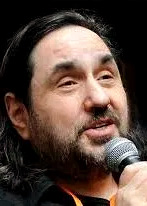

 Broadband networks are stretched thin today due to the large numbers of adults and students working from home. There are many stories on the web that indicate that a lot of employees are not going to be going back to the office when the pandemic is over. Here are two stories about a trend towards more teleworking from the dozens that a Google search uncovered.
Broadband networks are stretched thin today due to the large numbers of adults and students working from home. There are many stories on the web that indicate that a lot of employees are not going to be going back to the office when the pandemic is over. Here are two stories about a trend towards more teleworking from the dozens that a Google search uncovered.
 Only an idiot would believe that the U.S. is blocking TSMC manufacture of Huawei cell phone chips because of security fears. This is a commercial rivalry. The U.S. wants to put China's leading technology company out of business. We will fail, of course, at a price far higher than D.C. understands. The U.S. is ready for China's immediate countermeasures, even if Apple's stock price falls $hundreds of billions. But the long-run price will be devastating.
Only an idiot would believe that the U.S. is blocking TSMC manufacture of Huawei cell phone chips because of security fears. This is a commercial rivalry. The U.S. wants to put China's leading technology company out of business. We will fail, of course, at a price far higher than D.C. understands. The U.S. is ready for China's immediate countermeasures, even if Apple's stock price falls $hundreds of billions. But the long-run price will be devastating.
 Technology always evolves, and I've been reading about where scientists envision the evolution of 5G. The first generation of 5G, which will be rolled out over the next 3-5 years, is mostly aimed at increasing the throughput of cellular networks. According to Cisco, North American cellular data volumes are growing at a torrid 36% per year, and even faster than that in some urban markets where the volumes of data are doubling every two years. The main goal of the first-generation 5G is to increase network capacity to handle that growth.
Technology always evolves, and I've been reading about where scientists envision the evolution of 5G. The first generation of 5G, which will be rolled out over the next 3-5 years, is mostly aimed at increasing the throughput of cellular networks. According to Cisco, North American cellular data volumes are growing at a torrid 36% per year, and even faster than that in some urban markets where the volumes of data are doubling every two years. The main goal of the first-generation 5G is to increase network capacity to handle that growth.
 One of the most interesting outcomes of the COVID-19 crisis has been a huge resurgence of telephone calls. While broadband usage is up 40% or more in some markets, the volumes of traditional voice calls have skyrocketed. Verizon says it's now seeing an average of 800 million calls per day, which is double the number of calls made on the last Mother's Day. Verizon also says the average length of calls has increased by one-third over recent averages.
One of the most interesting outcomes of the COVID-19 crisis has been a huge resurgence of telephone calls. While broadband usage is up 40% or more in some markets, the volumes of traditional voice calls have skyrocketed. Verizon says it's now seeing an average of 800 million calls per day, which is double the number of calls made on the last Mother's Day. Verizon also says the average length of calls has increased by one-third over recent averages.
 The Caribbean needs more robust infrastructure to support the delivery of local online services during the COVID-19 pandemic and for crises to come. Public health and safety mandates, from social distancing and quarantines to stay-at-home orders and curfews, have confined an estimated one billion persons to their homes globally. The sudden restrictions on social movement have created a reliance on the Internet and technology-enabled services. This should come as no surprise.
The Caribbean needs more robust infrastructure to support the delivery of local online services during the COVID-19 pandemic and for crises to come. Public health and safety mandates, from social distancing and quarantines to stay-at-home orders and curfews, have confined an estimated one billion persons to their homes globally. The sudden restrictions on social movement have created a reliance on the Internet and technology-enabled services. This should come as no surprise.
 While it might still be too early to make predictions, there are dozens of articles on the web predicting how the COVID-19 pandemic might change our long-term behavior. Here are some of the more interesting predictions I've seen that involve broadband and telecom... Millions of people were sent home for work or school to homes that didn't have good broadband. These folks have been telling the world for years that they don't have good broadband...
While it might still be too early to make predictions, there are dozens of articles on the web predicting how the COVID-19 pandemic might change our long-term behavior. Here are some of the more interesting predictions I've seen that involve broadband and telecom... Millions of people were sent home for work or school to homes that didn't have good broadband. These folks have been telling the world for years that they don't have good broadband...
 This past month on 03-06 March, the global industry sub-group that exists at the center of 5G security met virtually. It is known as SA3 within the 3GPP organization, and it met over a period of five days to deal with some of the most important 5G security requirements. 3GPP is a "partnership" created among all the world's major standards bodies, which over several decades has cooperatively developed and evolved by far the largest and most successful global electronic communications network.
This past month on 03-06 March, the global industry sub-group that exists at the center of 5G security met virtually. It is known as SA3 within the 3GPP organization, and it met over a period of five days to deal with some of the most important 5G security requirements. 3GPP is a "partnership" created among all the world's major standards bodies, which over several decades has cooperatively developed and evolved by far the largest and most successful global electronic communications network.
 The final numbers are in for 2019 and the largest cable providers collectively lost over 5.9 million customers for the year - a loss of almost 7% of customers. The numbers below come from Leichtman Research Group which compiles these numbers from reports made to investors, except for Cox which is estimated. The numbers reported are for the largest cable providers, and Leichtman estimates that these companies represent 95% of all cable customers in the country.
The final numbers are in for 2019 and the largest cable providers collectively lost over 5.9 million customers for the year - a loss of almost 7% of customers. The numbers below come from Leichtman Research Group which compiles these numbers from reports made to investors, except for Cox which is estimated. The numbers reported are for the largest cable providers, and Leichtman estimates that these companies represent 95% of all cable customers in the country.
 In a previous blog post I mentioned that the FCC had taken away restrictions to allow broadband supplied by E-Rate funding to be used to provide free WiFi for the public. That's a good idea that will provide some relief for areas with little or no other broadband. But the announcement raises a more fundamental question - why was such a restriction in place to begin with?
In a previous blog post I mentioned that the FCC had taken away restrictions to allow broadband supplied by E-Rate funding to be used to provide free WiFi for the public. That's a good idea that will provide some relief for areas with little or no other broadband. But the announcement raises a more fundamental question - why was such a restriction in place to begin with?
 The coronavirus pandemic has, in the most emphatic way, shown us all just how interconnected everything and everyone is. A worldwide race is underway to minimize human interactions in order to avoid a global catastrophe. The inescapable consequence of these initiatives is an unprecedented shut down of the local, regional and global economy. The latest cost estimate to save the global economy is now at $7 trillion and climbing.
The coronavirus pandemic has, in the most emphatic way, shown us all just how interconnected everything and everyone is. A worldwide race is underway to minimize human interactions in order to avoid a global catastrophe. The inescapable consequence of these initiatives is an unprecedented shut down of the local, regional and global economy. The latest cost estimate to save the global economy is now at $7 trillion and climbing.